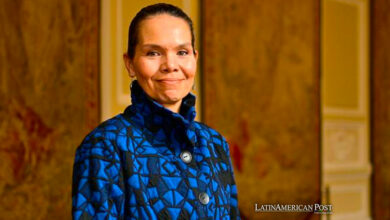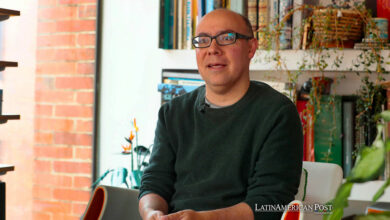Digital Tour Brings Gabriel García Márquez’s Cartagena, Colombia to Life

The streets of Getsemaní in Cartagena de Indias, a city that significantly influenced the life and works of Nobel laureate Gabriel García Márquez, are now featured in the Ruta Macondo, a digital initiative by the Fundación Gabo and Fundación Santo Domingo.
In the vibrant neighborhood of Getsemaní in Cartagena de Indias, Colombia, the essence of Gabriel García Márquez’s literary universe comes alive through the Ruta Macondo. This initiative, created by the Fundación Gabo and Fundación Santo Domingo, allows visitors to trace the Nobel Prize-winning author’s footsteps and understand the city’s profound impact on his work. A digital guide in Spanish and English leads explorers through 17 key locations, highlighting how these sites influenced García Márquez’s storytelling.
Merging Literature and Technology
The Ruta Macondo project is a testament to the power of technology in preserving cultural heritage. By utilizing cutting-edge tools such as maps, interactive content, and audio guides, it offers a unique and immersive experience for literature enthusiasts, mirroring global initiatives where technology enhances cultural and historical tourism.
For instance, the Anne Frank House in Amsterdam offers an augmented reality app that allows users to explore the hidden annex where Anne Frank wrote her diary. Similarly, the British Museum in London has developed virtual tours that enable visitors to experience its vast collections from anywhere in the world. These technological advancements preserve history and culture and make them accessible to a broader audience.
The Journey Through Getsemaní
Getsemaní, known for its bohemian atmosphere and vibrant community of artisans, musicians, and carpenters, was a significant backdrop in García Márquez’s life and works. The digital tour includes iconic sites such as the Torre del Reloj, Plazoleta Cervantes, and various theaters and bars in Cartagena. Streets like Media Luna and Parque del Centenario are also prominently featured on the tour.
The digital guide provides detailed descriptions and historical context, allowing visitors to appreciate the deep connection between the author and these locations. For example, García Márquez’s son, Gonzalo García Barcha, admitted during the inauguration of the Ruta Macondo that he was still discovering his father’s ties to Getsemaní. This sentiment underscores the enduring mystery and allure of García Márquez’s inspirations.
The Broader Impact of Literary Tourism
Jaime Abello, director of the Fundación Gabo, emphasized the project’s goal of embedding García Márquez’s legacy in Cartagena’s physical and cultural landscape. “The project aims to generate social and cultural development opportunities through his narrative, providing a means for people to make a living through literary tourism,” Abello explained.
Literary tourism has emerged as a potent tool for cultural preservation and economic development. In Latin America, cities like Buenos Aires have capitalized on their literary heritage by offering tours dedicated to famous authors like Jorge Luis Borges and Julio Cortázar. Similarly, the Ruta Macondo not only honors García Márquez’s memory but also boosts local tourism by attracting international visitors interested in his life and work, thereby contributing to the city’s cultural and economic growth.
The love García Márquez had for Cartagena, which began with his arrival in April 1948, is evident in novels like “Love in the Time of Cholera” and “Of Love and Other Demons.” His deep connection to the city culminated in his desire to be laid to rest there. In Cartagena, he worked as a reporter for El Universal, wrote the play “Diatriba de amor contra un hombre sentado,” and in 1995, established the Fundación para el Nuevo Periodismo Iberoamericano, now Fundación Gabo.
Embracing Digital Narratives
The successful integration of digital technology in projects like Ruta Macondo demonstrates the potential for similar initiatives across Latin America and beyond. By blending historical narratives with modern technology, these projects offer visitors a richer, more engaging experience.
The Ruta Macondo, with its innovative use of digital tools, serves as a model for future cultural and literary tours. It provides an immersive journey through the streets and stories that shaped one of the most beloved authors of the 20th century. As visitors follow the digital guide through Getsemaní, they learn about García Márquez’s life and experience the magic of his literary world in a tangible way.
As the project expands to include more of Cartagena’s historic center, it promises to attract even more visitors, further cementing the city’s status as a literary and cultural tourism hub. This digital tour is not just a tribute to García Márquez but a testament to the enduring power of his stories and the innovative ways technology can bring them to life.
Also read: Colombian Content Creator Defies Stereotypes in the Adult Entertainment Industry
The Ruta Macondo is a pioneering initiative that combines Gabriel García Márquez’s legacy with modern technology to create a unique and engaging tourist experience. By following the digital trail through Getsemaní, visitors can connect with the places that inspired his timeless works, ensuring that his stories continue to captivate and inspire future generations.





